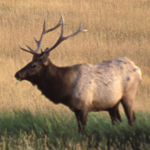|
HOME --> CLASS MAMMALIA
--> ORDER SORICOMORPHA
--> FAMILY Soricidae
--> SUBFAMILY Soricinae
--> TRIBE Soricini
--> GENUS Sorex
--> SUBGENUS Sorex
SPECIES Sorex (Sorex) araneus
| Author: | Linnaeus, 1758. | | Citation: | Syst. Nat., 10th ed., 1: 53. | | Common Name: | Common Shrew | | Type Locality: | "in Europe cryptis"; restricted to Uppsala, Sweden by Thomas (1911a:143). | | Distribution: | C, E, and N Europe including the British Isls (with some isolated populations in France, Italy and Spain), east to Siberia. | | Status: | IUCN – Lower Risk (lc). | | Comments: | Subgenus Sorex, S. araneus group. S. araneus is the preferred Palearctic species for studies in ecology and evolution; see Hausser et al. (1990), Hausser (1991), and Wójcik et al. (2002) for reviews. Karyotype variable (2n = 20-33, FN = 40). The species is well known for its Robertsonian chromosome polymorphism (Meylan, 1964) and for the tendency to establish local karyotype races (Hausser et al., 1985; Searle, 1984; Searle and Wójcik, 1998, 2000; Volobouev, 2003; Zima and Král, 1984b; Zima et al., 1994). In Switzerland two karyotype races occur that behave like parapatric species (Hausser et al., 1986); see under S. antinorii. Includes Blarina pyrrhonota Jentink, 1910, a name assigned to Cryptotis surinamensis by Cabrera (1958); however, Husson (1963) showed that the locality information was incorrect and that it was based on a Sorex araneus. The holotype skin (skull lost) of Myosorex preussi Matschie, 1893, formerly thought to represent an endemic species of Mt. Cameroon (Heim de Balsac, 1968b), is a Sorex araneus and therefore included as a synonym. Sorex isodon marchicus, described from E Germany (Passarge, 1984), is included in araneus as no clear morphological characters distinguish it from the latter (Turni et al., 2001), and because its karyotype represents the Laska race of the common shrews (Brünner et al., 2002c). |
|
| Offspring: | Synonyms:
alticola Miller, 1901
bergensis Miller, 1909
bohemicus Stepanek, 1944
bolkayi Martino, 1930
carpathicus Barrett-Hamilton, 1905
castaneus Jenys, 1838
concinnus Wagler, 1832
csikii Ehik, 1928
daubentonii Cuvier, 1829
eleonorae Wettstein, 1927
grantii Barrett-Hamilton and Hinton, 1913
hermanni Duvernoy, 1834
huelleri Lehmann, 1966
ignotus Fatio, 1905
iochanseni Ognev, 1933
labiosus Jenys, 1839
macrotrichus de Sélys Longchamps, 1839
marchicus Passarge, 1984
melanodon Wagler, 1832
mollis Fatio, 1900
nigra Fatio, 1869
novyensis Schaefer, 1975
nuda Fatio, 1869
pallidus Fitzinger, 1868
personatus Millet, 1828
petrovi Martino, 1939
peucinius Thomas, 1913
preussi (Matschie, 1893)
pulcher Zalesky, 1937
pyrenaicus Miller, 1909
pyrrhonota (Jentink, 1910)
quadricaudatus Kerr, 1792
rhinolophus Wagler, 1832
ryphaeus Yudin, 1989
sultanae Simsek, 1986
surinamensis Gmelin, 1788
tetragonurus Hermann, 1780
uralensis Ognev, 1933
vulgaris Nilsson, 1847
wettsteini Bauer, 1960
|
|
|



